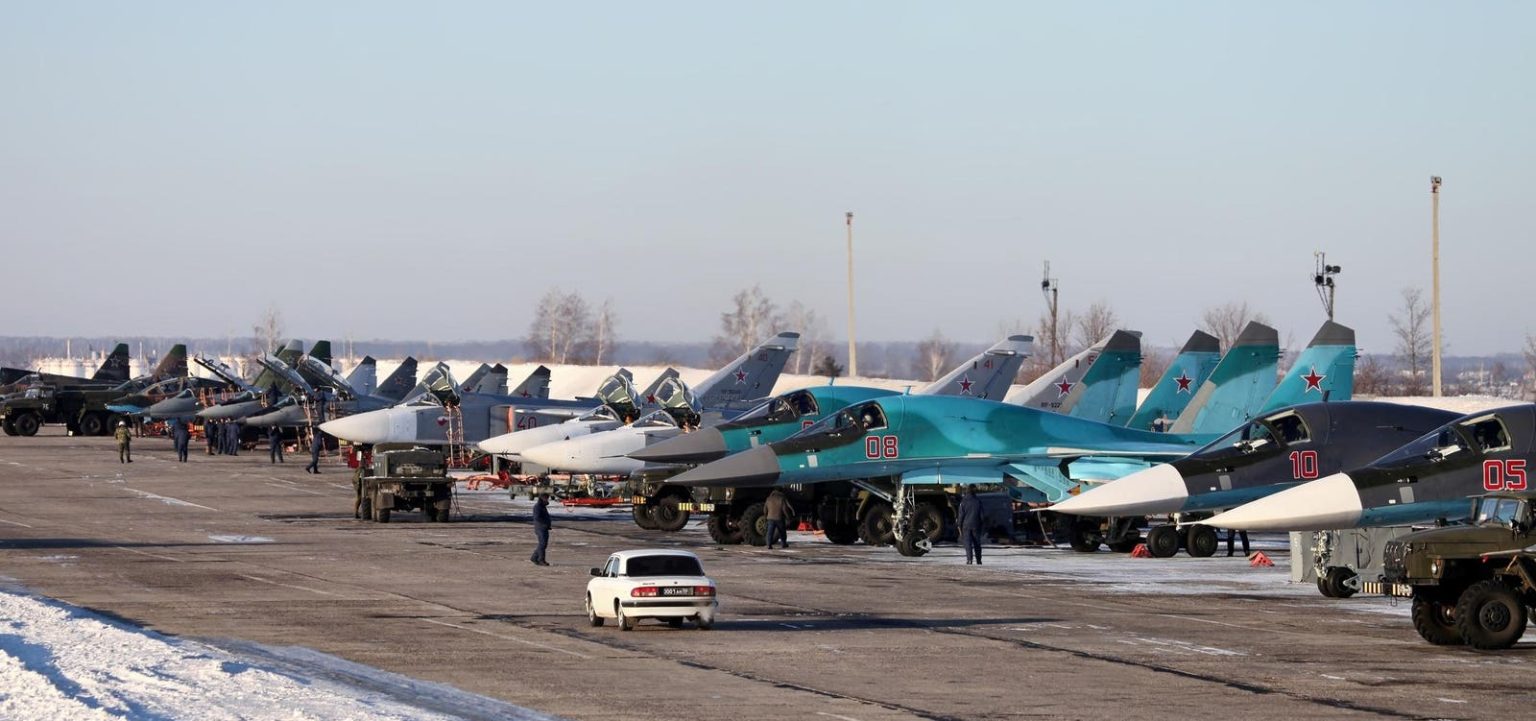For months, Ukrainian officials have been begging their foreign allies for permission to use the best donated weaponry—in particular, powerful ballistic missiles—to hit Russian warplanes that have been parking out in the open at airfields inside Russia within quick flying time of Ukrainian cities.
For months, those allies have demurred, citing the risk of escalation as Russia’s wider war on Ukraine grinds into its 29th month.
Clearly growing impatient, Ukrainian forces have stepped up their attacks on the most vulnerable Russian airfields—strictly deploying Ukrainian-made munitions. On Saturday, Ukrainian drones targeted Morozovsk air base in southern Russia 200 miles from the front line in eastern Ukraine.
According to the Ukrainian intelligence directorate, the drone raid destroyed a Russian air force Sukhoi Su-34 fighter-bomber, damaged two additional Su-34s and burned down an ammunition warehouse.
The directorate published satellite imagery of the base depicting what it described as “extensive areas of scorched earth” resulting from the ammo cooking off in the aftermath of the attack.
This isn’t the first attack on Morozovsk, but it is one of the most destructive. It’s a bittersweet victory for the Ukrainians, however. Similar raids are getting harder to pull off as the Russians redeploy their warplanes to less vulnerable bases.
It’s obvious what the Ukrainian intelligence directorate is trying to achieve. By targeting Morozovsk and other airfields near the Russia-Ukraine border, the directorate hopes to destroy the key enablers of Russia’s glide-bombing campaign: the warplanes that carry the bombs as well as the bombs themselves.
Since dropping its first crude glide bombs on Ukraine last year, the Russian air force has really embraced the satellite-guided munitions. Thanks to their pop-out wings, the hastily-built “KAB” glide bombs possess just enough range—25 miles or more, depending on the model—to allow Su-34 fighter-bombers to hit Ukrainian troops and civilians from beyond the range of the best Ukrainian air defenses.
Every day, the Russians drop as many as 100 KABs, some weighing more than three tons. “Unfortunately, in urban environments, their large and frequent use is highly effective,” Ukrainian analysis group Frontelligence Insight reported.
“Even though they are often imprecise, the sheer payload is enough to demolish or severely damage buildings, even if the KAB doesn’t hit the target directly,” Frontelligence Insight continued. “When buildings collapse, underground basements trap people inside, making rescue operations impossible, especially when the Russians conduct double and triple-tap attacks.”
As urban demolition weapons, the KABs have been a deciding factor in practically every recent Russian victory all along the 700-mile front line. “In the past, like in the battle for Bakhmut [last year], it sometimes took days for Russian artillery to damage buildings enough to force defenders to retreat,” Frontelligence Insight explained. “Now, entire buildings can collapse in seconds, rendering them useless for defensive purposes.”
It’s a top priority of the government in Kyiv to blunt the glide-bombing campaign by destroying the bombers, the bombs—or both.
There was a rare opportunity to deliver a major blow against the KAB infrastructure earlier this summer, when the Russian air force’s 47th Guards Bomber Aviation Regiment parked dozens of Su-34s—out of roughly 100 in service—in open at Voronezh Malshevo air base in southern Russia 100 miles from the border with Ukraine.
Voronezh Malshevo is a reasonably well-defended base, so the Ukrainians pleaded for permission to fire their best American-made Army Tactical Missile System rockets at the base. The ATACMs are almost impossible to intercept.
But the administration of U.S. Pres. Joe Biden said no. “Our policy has not changed,” Jake Sullivan, Biden’s national security advisor, told reporters last month. As before, Ukraine would only be allowed to fire ATACMS at targets in Russian-occupied Ukraine.
The Russians observed the heated diplomacy regarding ATACMS—and made a rare proactive decision to pull the Su-34s from Voronezh Malshevo and other border airfields.
“Between the second half of June and mid-July, Russian forces relocated a lion’s [share] of valuable military assets away from the border area with Ukraine,” Frontelligence Insight noted. The departure of Su-34s from Voronezh Malshevo was among “the most notable movements.”
Today many of the Su-34s are at bases hundreds of miles from the border. They’re not invulnerable to Ukrainian drones—the farthest-flying models range more than 1,000 miles.
But they are safe from most Ukrainian drones, as well as from the ATACMS, the most powerful of which range just 190 miles. If the White House ever grants permission for ATACMS raids on Russian bases, it might be too late. The most valuable targets may be too far away.
Obviously, a handful of Su-34s—as well as some stocks of KAB bombs—remain at border airfields such as Morozovsk: Ukraine just hit three of the planes plus their ammo.
But to end the glide-bombing campaign, Ukraine needs to destroy scores of Su-34s—not one or several. And smarter Russian deployments are making that harder to achieve.
Sources:
1. Ukrainian Main Intelligence Directorate: https://gur.gov.ua/en/content/znyshcheno-su-34-ta-sklad-bk-detali-bavovny-na-aerodromi-morozovsk.html
2. Frontelligence Insight: https://frontelligence.substack.com/p/impact-and-defense-mitigating-the; https://frontelligence.substack.com/p/russians-dont-wait-for-western-approval
3. U.S. Defense Department: https://www.defense.gov/News/News-Stories/Article/Article/3836116/national-security-advisor-ukraine-is-successfully-defending-against-russia/
Read the full article here





